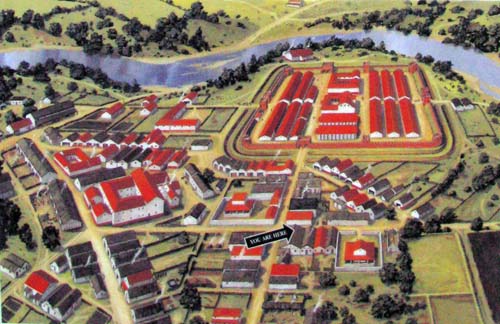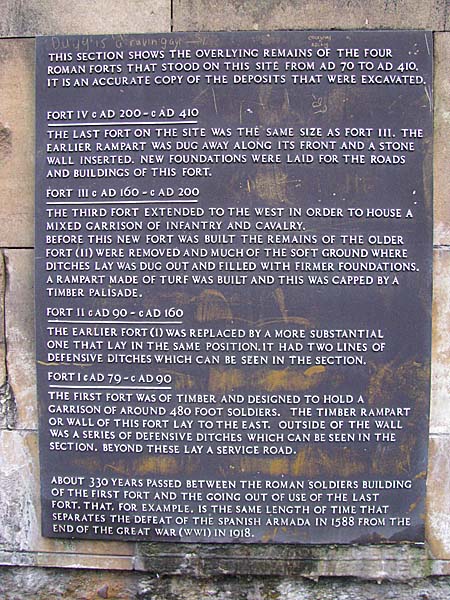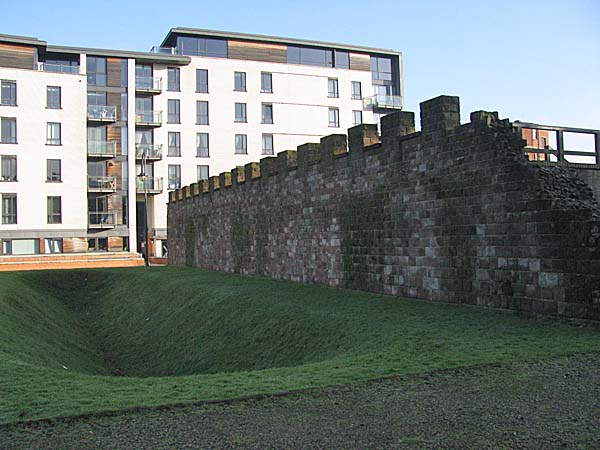|
The
Roman Fort
There has been something of a debate among historians about the name of Roman Manchester. In "Roman Manchester" by G.D.B. Jones and S. Grealey, the issue is debated in some depth and concluded thus: "Modern scholars give preference to the form MAMUCIUM over the traditional one of MANCUNIUM." What they do agree about is the fact that MAMUCIUM comprised a Roman fort beside the River Irwell and a settlement around it.
My father told me about this fort when I was a child and took me into a coal yard beneath the railway viaducts in Castlefield to show me what he said was a remnant of the fort. I remember being sceptical, but as always he was right, at least about the presence of the fort. It was the Roman General Agricola, who is credited with recognizing the importance of this site beside the Irwell and on the road between the Roman forts at York and Chester. The name Mamucium means "breast shaped hill" to reflect the shape of the sandstone promentary beside the river where the fort was built. The first fort was built of wood, but
over the following 3 centuries a stone fort was built
further downstream in what today is Castlefield. In
the 1970s the site was excavated, and some of the
structures found in that excavation can be seen in a
small park across from the Air and Space Museum.
The site also includes a reconstruction of the North Gate on its original foundations which can be seen at the rear of the site. Outside of the gate are two of the defensive ditches. 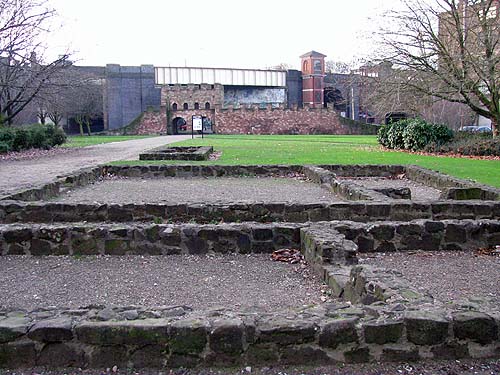 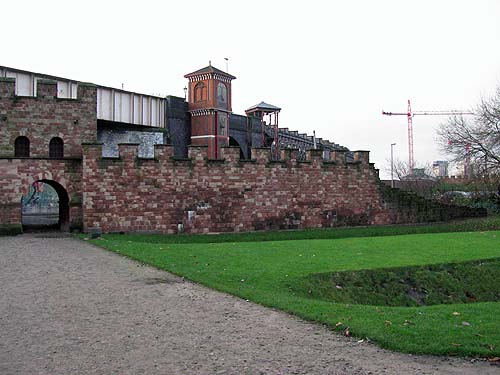 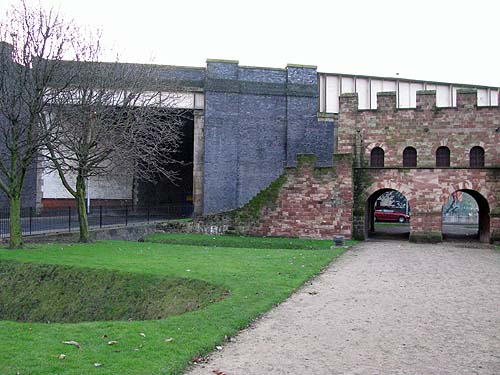 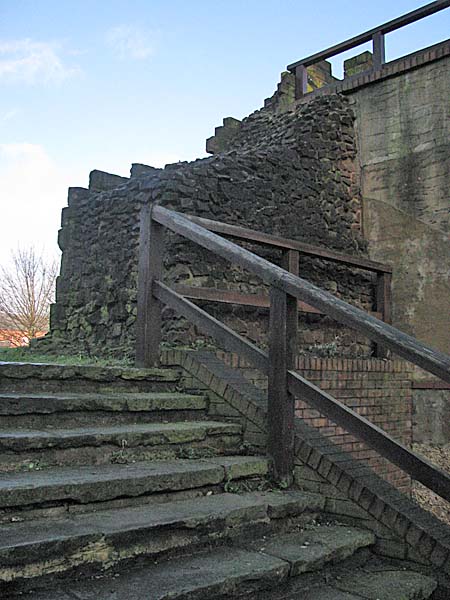 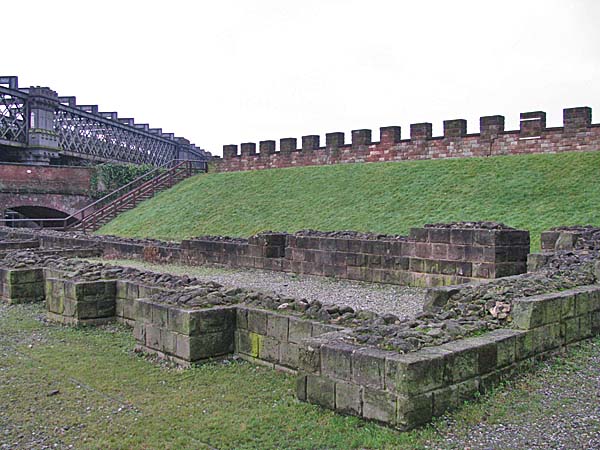 |
|
